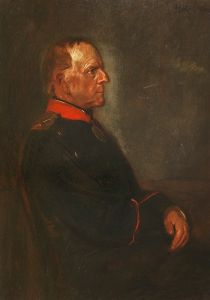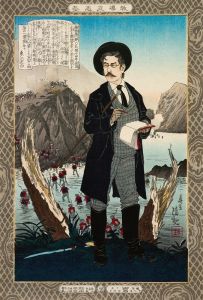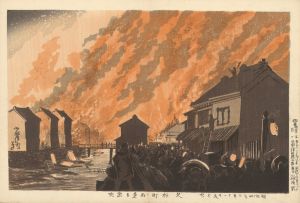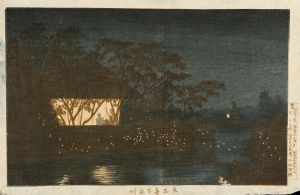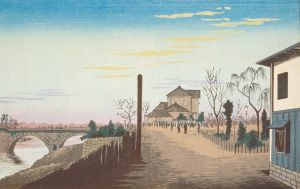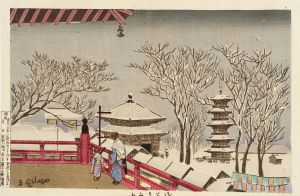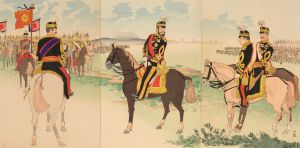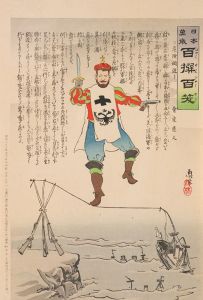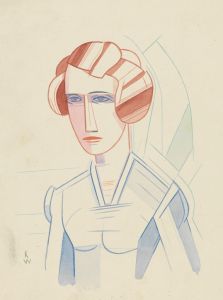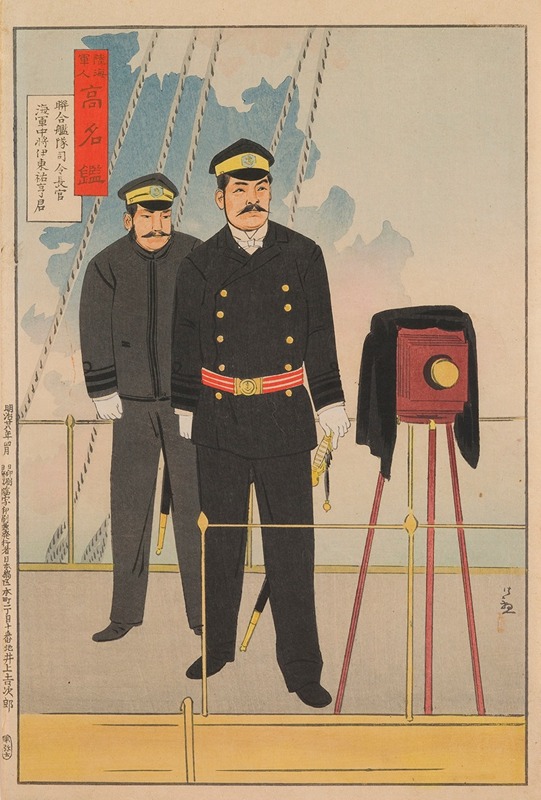
Vice Admiral Itō Sukeyuki, Commander-in-Chief of the Combined Fleet
A hand-painted replica of Kobayashi Kiyochika’s masterpiece Vice Admiral Itō Sukeyuki, Commander-in-Chief of the Combined Fleet, meticulously crafted by professional artists to capture the true essence of the original. Each piece is created with museum-quality canvas and rare mineral pigments, carefully painted by experienced artists with delicate brushstrokes and rich, layered colors to perfectly recreate the texture of the original artwork. Unlike machine-printed reproductions, this hand-painted version brings the painting to life, infused with the artist’s emotions and skill in every stroke. Whether for personal collection or home decoration, it instantly elevates the artistic atmosphere of any space.
Vice Admiral Itō Sukeyuki, Commander-in-Chief of the Combined Fleet by Kobayashi Kiyochika is a woodblock print created by the renowned Japanese artist Kobayashi Kiyochika. This artwork is part of Kiyochika's broader body of work, which often depicted scenes of modern warfare, naval battles, and prominent figures during the Meiji era (1868–1912). The print portrays Vice Admiral Itō Sukeyuki (1843–1914), a key figure in the Imperial Japanese Navy and the Commander-in-Chief of the Combined Fleet during the First Sino-Japanese War (1894–1895).
Vice Admiral Itō Sukeyuki played a pivotal role in Japan's naval modernization and its military successes during the late 19th century. He is best known for his leadership in the Battle of the Yalu River in 1894, a decisive naval engagement during the First Sino-Japanese War. Under his command, the Japanese fleet achieved a significant victory over the Qing Dynasty's Beiyang Fleet, solidifying Japan's naval dominance in East Asia. This victory was instrumental in Japan's eventual triumph in the war and its emergence as a major regional power.
Kobayashi Kiyochika (1847–1915), the artist behind this print, is celebrated for his innovative approach to ukiyo-e, a traditional Japanese woodblock printing style. Kiyochika is often referred to as the "last ukiyo-e master" due to his efforts to adapt the art form to reflect Japan's rapid modernization during the Meiji period. His works frequently combined traditional techniques with Western-inspired perspectives and shading, capturing the transformative spirit of the era. Kiyochika's prints often served as both artistic expressions and historical documentation, showcasing Japan's military achievements and technological advancements.
In this particular print, Kiyochika likely sought to commemorate Vice Admiral Itō Sukeyuki's contributions to Japan's naval success and to celebrate the modernization of the Japanese military. The artwork reflects the patriotic fervor and national pride that characterized much of Kiyochika's work during this period. Itō is depicted in his naval uniform, exuding authority and confidence, symbolizing Japan's growing strength and ambition on the global stage.
This print is an example of how art was used as a medium to convey historical events and honor significant figures in Japan's modernization. It also highlights the intersection of traditional Japanese art forms with the themes of industrialization and military progress that defined the Meiji era.






